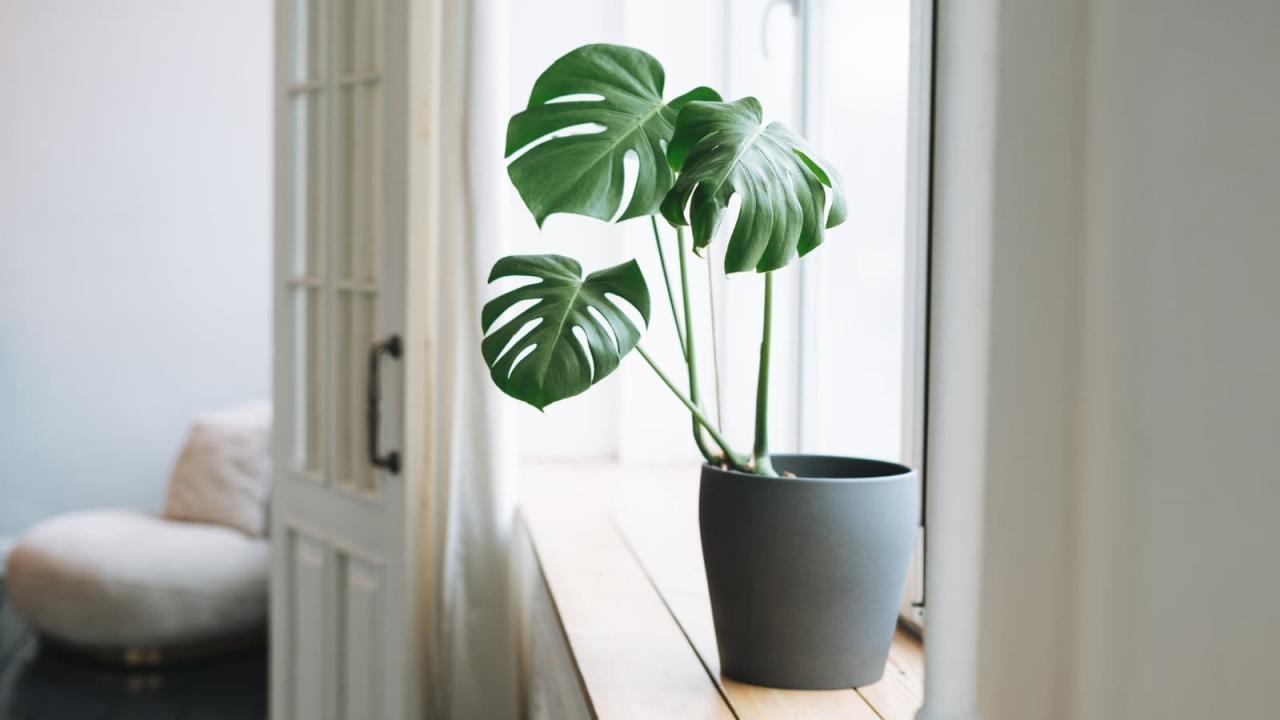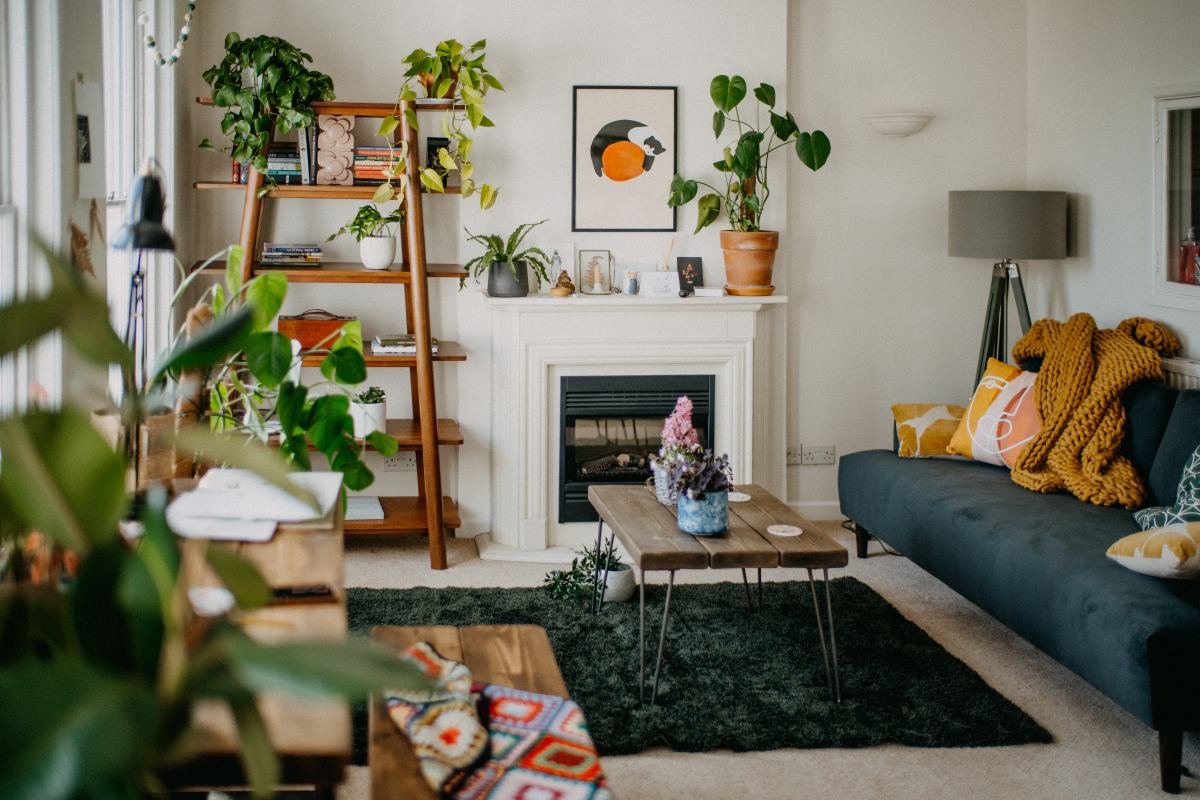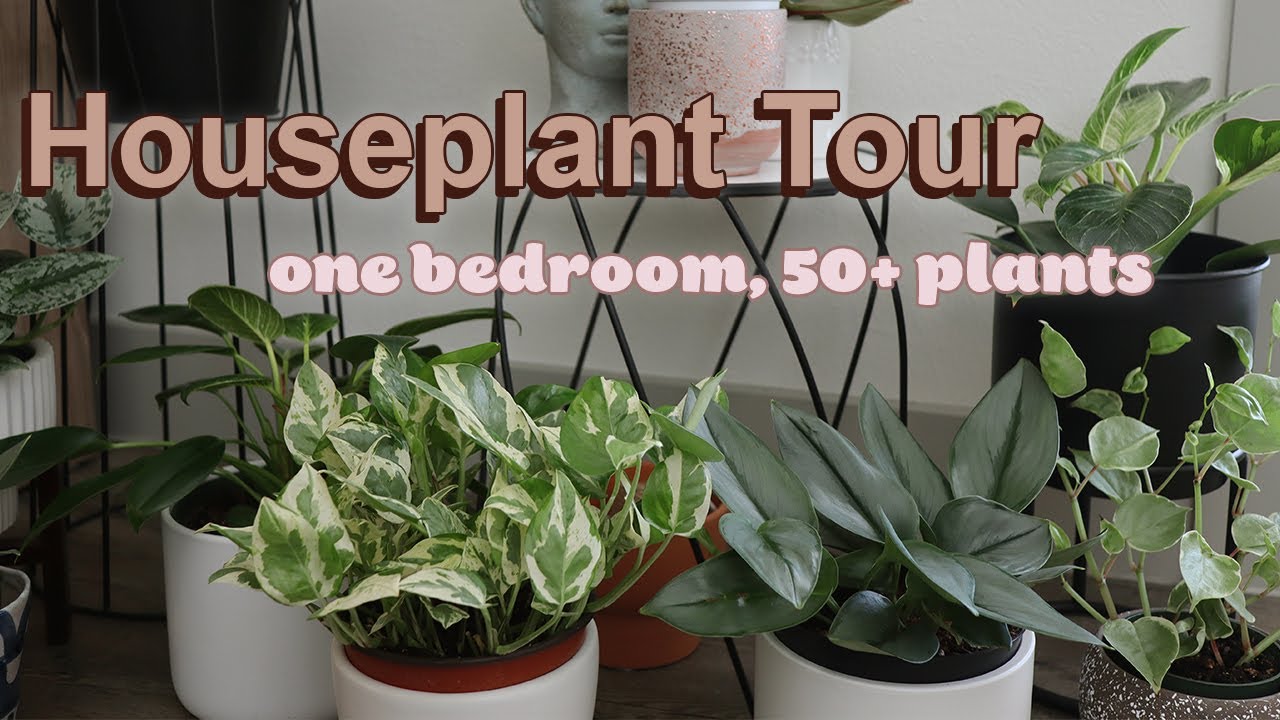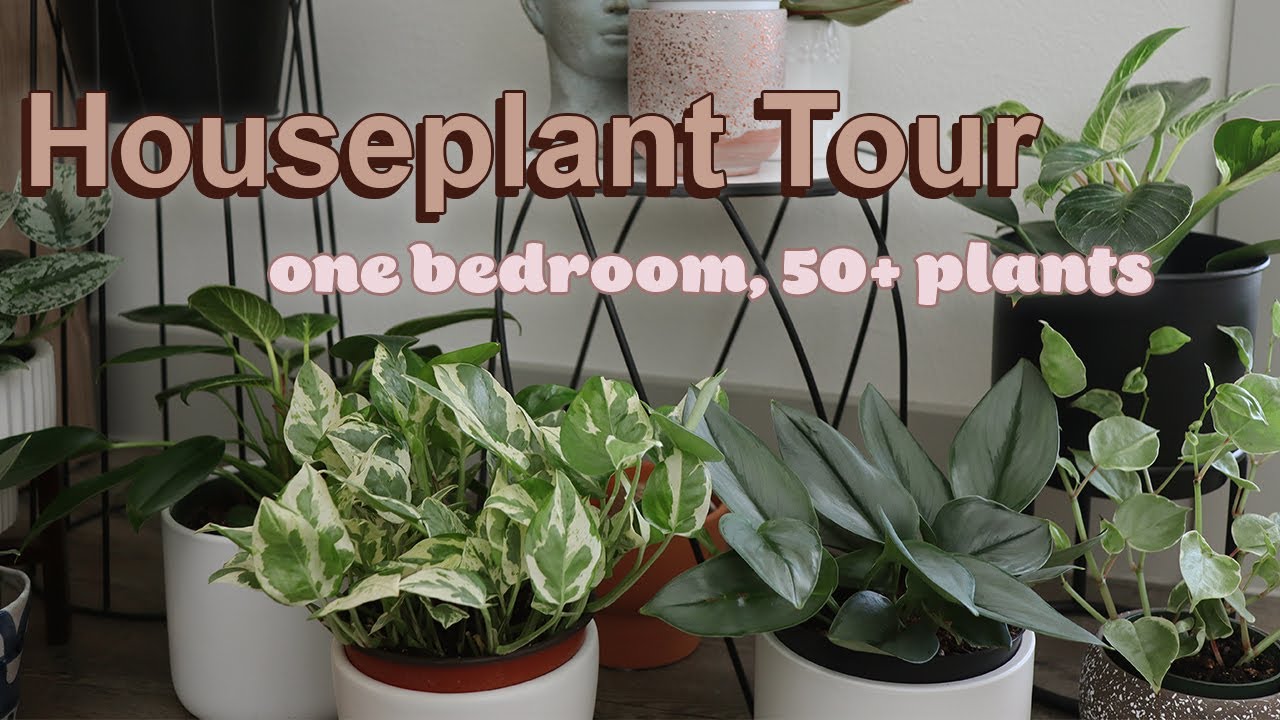Beginner Houseplants That Are Perfect for Small Apartments: Bringing the outdoors in is a fantastic way to enhance your living space, especially in a small apartment. While limited space can present challenges, it doesn’t mean you have to sacrifice the beauty and benefits of houseplants.
With careful selection and a little know-how, you can create a thriving indoor jungle even in the smallest of apartments.
This guide will delve into the world of beginner-friendly houseplants that are ideal for compact living. We’ll explore low-light options, compact varieties, and easy-care plants that are sure to thrive in your space. We’ll also cover essential care tips and creative display ideas to help you make the most of your limited square footage.
Introduction

Bringing nature indoors can transform a small apartment into a tranquil oasis. Houseplants offer numerous benefits, including purifying the air, reducing stress, and enhancing mood. They can also add a touch of life and vibrancy to even the most compact spaces.
However, growing plants in limited spaces presents unique challenges. Limited sunlight, restricted floor space, and potential for overwatering can pose obstacles to plant success. Choosing the right plants for small apartment living is crucial for ensuring their thriving and enjoyment.
Selecting the Right Plants for Small Apartments
Choosing the right plants is paramount for thriving greenery in small spaces. Consider these factors when selecting houseplants for your apartment:
- Light Requirements:Assess the amount of natural light your apartment receives. Some plants thrive in low-light conditions, while others require ample sunlight. For instance, snake plants ( Sansevieria trifasciata) and ZZ plants ( Zamioculcas zamiifolia) tolerate low-light conditions, making them ideal for apartments with limited natural light.
Conversely, plants like peace lilies ( Spathiphyllum) and monsteras ( Monstera deliciosa) prefer bright, indirect light.
- Space Considerations:Evaluate the available space for your plants. Choose plants that fit comfortably within your apartment’s layout. For example, trailing plants like pothos ( Epipremnum aureum) can be hung from shelves or placed on high surfaces, maximizing vertical space. Compact plants like succulents and cacti are suitable for windowsills or small tables.
- Water Needs:Consider the frequency of watering required for each plant. Some plants, like cacti and succulents, require minimal watering, while others, such as ferns and peace lilies, need regular watering. Choose plants that align with your watering habits to prevent overwatering or underwatering.
- Toxicity:If you have pets or children, select non-toxic plants. Some popular houseplants, such as peace lilies and philodendrons, are toxic if ingested. Opt for safer alternatives like spider plants ( Chlorophytum comosum) or cast iron plants ( Aspidistra elatior).
Low-Light Plants
Low-light plants are a godsend for apartment dwellers, especially those with limited natural light. They can thrive in dimly lit corners and add a touch of greenery to your space without demanding constant attention. These resilient plants can tolerate low light conditions, making them ideal for even the shadiest apartments.
Low-Light Tolerant Houseplants
Low-light tolerant houseplants are those that can survive and thrive with minimal direct sunlight. These plants adapt to low light conditions and are perfect for indoor spaces with limited natural light. They can be placed near windows that receive indirect sunlight or even in corners with minimal light.
Beginner houseplants are great for small apartments, offering a touch of nature and improving air quality. But did you know that some of these plants can also be used to create spooky centerpieces for Halloween? Check out this article on How to Make a Spooky Centerpiece Using Halloween Houseplants for some creative ideas.
After the festivities, you can easily return your plants to their regular spots, adding a touch of greenery to your home all year round.
- Snake Plant (Sansevieria trifasciata): Snake plants are known for their hardiness and ability to tolerate low light conditions. They prefer indirect light but can also thrive in dimly lit areas. They can even survive with just artificial light. Snake plants are also very low-maintenance, requiring minimal watering and infrequent fertilization.
- ZZ Plant (Zamioculcas zamiifolia): ZZ plants are another popular choice for low-light conditions. They can tolerate very low light levels and even survive in complete darkness for extended periods. These plants are drought-tolerant and require infrequent watering, making them ideal for busy individuals.
- Peace Lily (Spathiphyllum wallisii): Peace lilies are known for their elegant white flowers and ability to purify the air. They prefer bright, indirect light but can tolerate low light conditions. They should be watered when the top inch of soil feels dry.
- Cast Iron Plant (Aspidistra elatior): As its name suggests, the cast iron plant is incredibly resilient and can tolerate a wide range of conditions, including low light. It prefers bright, indirect light but can also thrive in dimly lit areas.
- Pothos (Epipremnum aureum): Pothos is a versatile plant that can be grown in hanging baskets or trailing along shelves. It prefers bright, indirect light but can tolerate low light conditions. Pothos is a fast-growing plant and requires regular watering.
Positioning Low-Light Plants
To ensure the well-being of your low-light plants, proper positioning is key. Consider these tips:
- Near a Window:While low-light plants don’t require direct sunlight, placing them near a window that receives indirect light can still benefit their growth. This provides them with a source of natural light without scorching their leaves.
- Rotate Regularly:To ensure even light exposure, rotate your plants regularly. This prevents one side from receiving more light than the other, leading to uneven growth.
- Artificial Light:If your apartment lacks natural light, consider using artificial light sources. Grow lights specifically designed for plants can provide the necessary light for their growth.
Compact and Space-Saving Plants
Small apartments often present a challenge when it comes to decorating with houseplants. Limited space can make it difficult to accommodate larger plants, but don’t despair! There are many compact and space-saving houseplants that can thrive in small spaces and add a touch of greenery to your home.
These plants are perfect for those who want to enjoy the benefits of houseplants without sacrificing precious square footage.
Compact and Space-Saving Plants
These plants are known for their compact growth habits and ability to thrive in small containers, making them ideal for limited spaces.
- Air Plants (Tillandsia):These unique plants require no soil and can be displayed in various creative ways. They absorb moisture and nutrients from the air, making them perfect for terrariums, hanging planters, or even mounted on decorative objects. Air plants come in a variety of shapes, sizes, and colors, adding visual interest to any space.
Beginner houseplants are great for small apartments, as they can add life and color to a space without taking up too much room. If you’re looking for a touch of the spooky for your apartment, consider some of the plants that are featured in our guide on Best Plants for a Dark and Mysterious Halloween Look.
These plants, with their dark foliage and intriguing silhouettes, can add a touch of mystery and intrigue to any room. Of course, when choosing plants for your apartment, be sure to select ones that thrive in the light conditions available.
- Succulents:Succulents are known for their water-storing leaves and compact growth. They come in a wide variety of shapes, sizes, and colors, making them versatile additions to any decor. Popular options include Echeveria, Sedum, and Haworthia, which can be displayed in small pots, terrariums, or even on shelves.
- Pothos (Epipremnum aureum):This trailing vine is a popular choice for hanging baskets or shelves, where its cascading foliage can add a touch of greenery to a small space. Pothos is known for its easy care and tolerance of low light conditions, making it an excellent choice for beginners.
- Spider Plant (Chlorophytum comosum):Another popular trailing vine, the spider plant is known for its air-purifying properties and ability to produce “spiderettes” – small plantlets that grow on the ends of its stems. Spider plants can be displayed in hanging baskets or placed on shelves, allowing their foliage to cascade downwards.
- Cast Iron Plant (Aspidistra elatior):As its name suggests, the cast iron plant is incredibly resilient and can tolerate low light, infrequent watering, and neglect. This makes it a perfect choice for beginners or those who forget to water their plants regularly. Cast iron plants can be displayed in small pots or even on a tabletop.
Easy-Care Plants
For those starting their houseplant journey, easy-care plants are ideal. These resilient companions thrive with minimal attention, making them perfect for busy schedules or beginner green thumbs.
Easy-Care Plants for Beginners
These low-maintenance plants require minimal care, making them perfect for apartment dwellers.
- Snake Plant (Sansevieria trifasciata): Known for its striking vertical foliage, the snake plant is remarkably tolerant of neglect. It prefers bright, indirect light but can also tolerate low-light conditions. Water only when the soil is completely dry, typically every 2-4 weeks. Snake plants are drought-tolerant and can survive periods of dryness.
Fertilize sparingly during the growing season (spring and summer) with a balanced liquid fertilizer diluted to half strength.
- ZZ Plant (Zamioculcas zamiifolia): This plant is renowned for its ability to withstand neglect. It thrives in low-light conditions and can tolerate infrequent watering. Water only when the soil is completely dry, which can be every 2-3 weeks. Avoid overwatering, as this can lead to root rot.
ZZ plants are low-maintenance and require minimal fertilization, especially in low-light conditions.
- Cast Iron Plant (Aspidistra elatior): The cast iron plant earns its name for its remarkable resilience. It can tolerate low light, infrequent watering, and even neglect. Water only when the top inch of soil is dry, typically every 2-3 weeks. It’s important to allow the soil to dry out between waterings to prevent root rot.
Fertilize sparingly during the growing season (spring and summer) with a balanced liquid fertilizer diluted to half strength.
- Pothos (Epipremnum aureum): Pothos is a popular choice for its trailing growth habit and adaptability. It thrives in bright, indirect light but can tolerate low-light conditions. Water when the top inch of soil is dry, typically every 1-2 weeks. Pothos is a relatively humidity-tolerant plant but can benefit from occasional misting.
Fertilize every 4-6 weeks during the growing season with a balanced liquid fertilizer diluted to half strength.
Preventing Common Problems
While these plants are easy to care for, there are some common issues to watch out for:
- Overwatering:Overwatering is the most common problem for houseplants. Allow the soil to dry out completely between waterings. If you notice yellowing leaves or soft stems, it may be a sign of overwatering.
- Pests:Spider mites, mealybugs, and aphids are common pests that can infest houseplants. Inspect your plants regularly for signs of infestation, such as webbing, white cottony patches, or small insects. If you find pests, treat them with insecticidal soap or neem oil.
Air-Purifying Plants

Small apartments can sometimes feel stuffy and lack fresh air. Fortunately, certain houseplants can help purify the air, making your living space healthier and more pleasant.
Air-Purifying Plants and Their Benefits
Several houseplants are known for their ability to remove harmful pollutants from the air. These plants can be particularly beneficial in small apartments where air circulation might be limited.
- Snake Plant (Sansevieria trifasciata): This hardy plant is a popular choice for beginners due to its resilience and low-maintenance requirements. It is known for its ability to remove formaldehyde, benzene, and xylene from the air, common pollutants found in furniture, paints, and cleaning products.
- Peace Lily (Spathiphyllum wallisii): The peace lily is an elegant plant with striking white flowers. It is an effective air purifier, removing pollutants such as ammonia, formaldehyde, and benzene. These pollutants are often found in household cleaners and building materials.
- English Ivy (Hedera helix): This trailing plant is known for its ability to remove airborne pollutants like formaldehyde, benzene, and toluene. It is also effective at removing mold spores, making it a good choice for humid environments.
- Spider Plant (Chlorophytum comosum): The spider plant is an easy-to-grow plant that produces spiderettes, or baby plants, that can be easily propagated. It is an excellent air purifier, removing pollutants such as carbon monoxide, formaldehyde, and xylene.
- ZZ Plant (Zamioculcas zamiifolia): The ZZ plant is a very low-maintenance plant that can tolerate low light and infrequent watering. It is known for its ability to remove toxins such as formaldehyde and toluene, which are commonly found in carpets and upholstery.
Creative Display Ideas
Small apartments often lack ample floor space, but that doesn’t mean you can’t enjoy the beauty and benefits of houseplants. With a little creativity, you can create stunning displays that maximize your space and add a touch of greenery to every corner.
Vertical Gardens
Vertical gardens are a fantastic way to add greenery to small spaces without taking up valuable floor space. They can be as simple as a few plants placed on a wall-mounted shelf or as elaborate as a fully integrated living wall.
A vertical garden can be created using a variety of materials, such as repurposed pallets, wire mesh, or even simple picture frames.
For a simple vertical garden, consider using trailing plants like pothos, spider plants, or philodendrons. These plants can cascade down the sides of the shelf, creating a lush and eye-catching display.
Plant |
Description |
Image |
|---|---|---|
Pothos |
A popular choice for vertical gardens due to its trailing habit and easy care requirements. |
Imagine a pothos plant trailing down a wall-mounted shelf, its heart-shaped leaves cascading in a lush green waterfall. |
Spider Plant |
Known for its air-purifying properties and its ability to produce “spiderettes” (baby plants) that can be easily propagated. |
Picture a spider plant cascading down a wall-mounted shelf, its long, arching leaves adorned with delicate white flowers. |
Philodendron |
A genus of plants known for their large, heart-shaped leaves and trailing growth habit. |
Visualize a philodendron plant trailing down a wall-mounted shelf, its large, glossy leaves adding a touch of tropical elegance. |
Hanging Baskets, Beginner Houseplants That Are Perfect for Small Apartments
Hanging baskets are a classic way to add greenery to small spaces. They’re perfect for showcasing trailing plants, which can cascade down from the ceiling, adding a touch of whimsy and texture to the room.
Hanging baskets are an excellent option for plants that prefer indirect light, as they can be placed near a window without being directly exposed to the sun.
Popular choices for hanging baskets include:
- Pothos: Its trailing growth habit makes it ideal for hanging baskets. Its vibrant green leaves add a touch of life to any room.
- Spider Plant: A versatile plant that can be grown in hanging baskets, where its long, arching leaves create a beautiful cascading effect.
- English Ivy: A popular choice for hanging baskets, its trailing growth habit and vibrant green leaves add a touch of elegance to any room.
Plant Care Tips for Small Apartments
Small apartments present unique challenges for houseplant care, but with the right techniques, you can create a thriving green oasis even in limited spaces. Here are some practical tips to ensure your plants flourish in your compact living environment.
Watering Techniques to Avoid Overwatering
Overwatering is a common problem for apartment dwellers, as it’s easy to overcompensate for the perceived dryness of the air. To avoid this, it’s crucial to establish a consistent watering routine based on your plant’s needs and the environment.
- Check the soil moisture:Before watering, insert your finger about an inch into the soil. If it feels dry, it’s time to water. If it’s still moist, wait a few more days.
- Use a watering can with a long spout:This allows you to target the soil directly, preventing water from pooling on the leaves and potentially causing root rot.
- Water thoroughly but infrequently:Aim to soak the soil completely, allowing excess water to drain out. Then, wait until the soil dries out before watering again.
- Avoid overwatering during winter:Plants generally need less water during the colder months, as they grow more slowly. Adjust your watering schedule accordingly.
Strategies for Maintaining Humidity Levels
While many plants thrive in moderate humidity, apartments can be notoriously dry, especially during the winter months. Here are some methods to increase humidity levels:
- Group plants together:Plants naturally release moisture into the air, so grouping them together can create a mini-humidifying effect.
- Use a humidifier:A small, cool-mist humidifier can effectively increase humidity levels in a room, especially during dry periods.
- Place a tray of water near your plants:The water will evaporate, increasing humidity in the surrounding air.
- Mist your plants regularly:A gentle misting can help to increase humidity levels, but be sure to avoid overdoing it, as this can lead to fungal diseases.
Methods for Preventing Pests and Diseases
Pests and diseases can be a problem in small apartments, as they can easily spread from one plant to another. It’s essential to take preventative measures to keep your plants healthy:
- Inspect your plants regularly:Look for signs of pests, such as insects, webs, or damage to leaves. Early detection is key to preventing a full-blown infestation.
- Isolate new plants:Before introducing a new plant to your collection, quarantine it for a few weeks to ensure it’s pest-free.
- Use natural pest control methods:Neem oil, insecticidal soap, and diatomaceous earth are effective natural options for controlling pests.
- Avoid overwatering:Soggy soil can create a breeding ground for fungal diseases. Water your plants only when the soil is dry to the touch.
- Clean your plants:Regularly wipe down leaves with a damp cloth to remove dust and potential pests.
Conclusion

Bringing the green indoors is a fantastic way to enhance your small apartment’s ambiance and well-being. By selecting the right beginner-friendly plants, you can enjoy the beauty and benefits of nature without overwhelming your space.
Remember, the key to success is choosing plants that thrive in low-light conditions, are compact and space-saving, and require minimal maintenance. Additionally, incorporating air-purifying plants can improve the quality of your indoor air, creating a healthier living environment.
Resources for Further Exploration
There are numerous resources available to help you delve deeper into the world of houseplants.
- Online Communities:Join online forums and social media groups dedicated to houseplants. You can connect with other plant enthusiasts, share tips, and seek advice.
- Local Plant Nurseries:Visit local plant nurseries to explore a wide variety of plants, seek expert recommendations, and get personalized advice on care.
- Books and Websites:Numerous books and websites provide comprehensive information on houseplant care, identification, and propagation.
Epilogue: Beginner Houseplants That Are Perfect For Small Apartments
Transforming your small apartment into a verdant oasis is easier than you might think. By choosing the right plants and applying the tips Artikeld in this guide, you can enjoy the calming presence and air-purifying benefits of houseplants, even in a limited space.
Start small, experiment with different varieties, and watch your indoor jungle flourish!
Question & Answer Hub
What are the best low-light houseplants for beginners?
Some excellent low-light options for beginners include Snake Plants, ZZ Plants, Peace Lilies, Cast Iron Plants, and Pothos. These plants can tolerate low light conditions and are relatively easy to care for.
How often should I water my houseplants?
Watering frequency depends on the plant species, pot size, and environmental factors. Generally, it’s best to water when the top inch of soil is dry. Avoid overwatering, as it can lead to root rot.
What are the signs of an overwatered plant?
Signs of overwatering include yellowing leaves, drooping stems, and soggy soil. If you suspect overwatering, reduce watering frequency and allow the soil to dry out completely between waterings.

